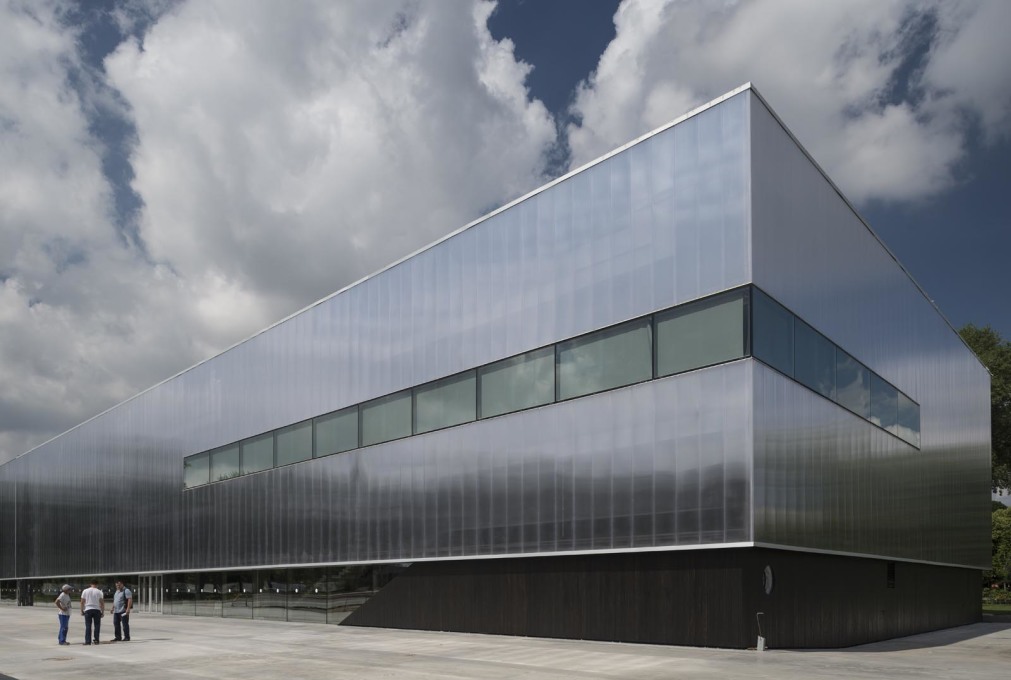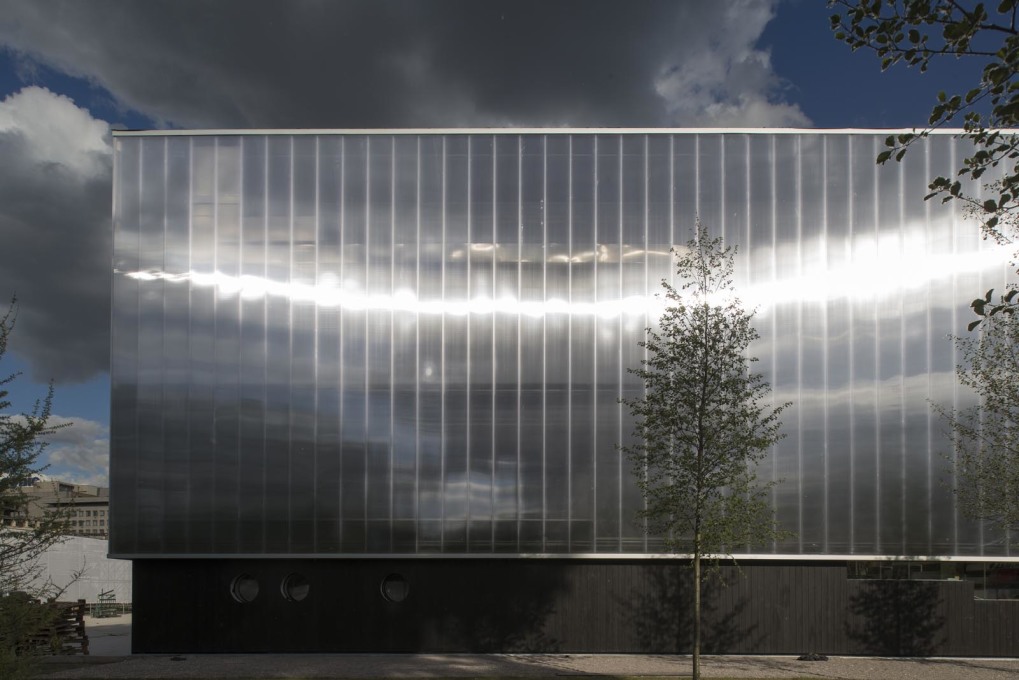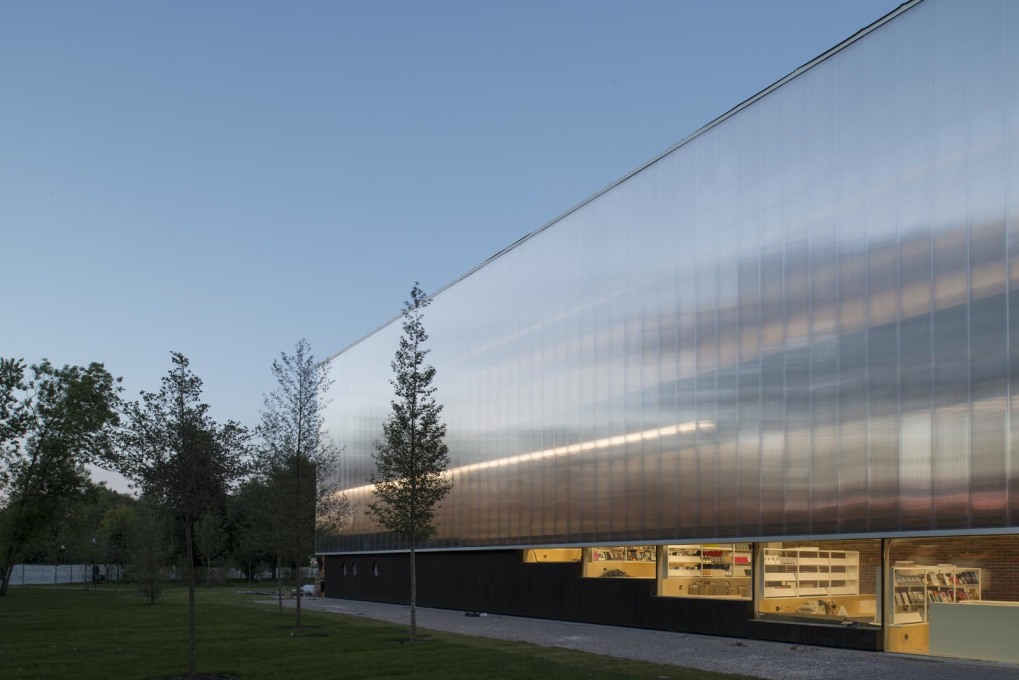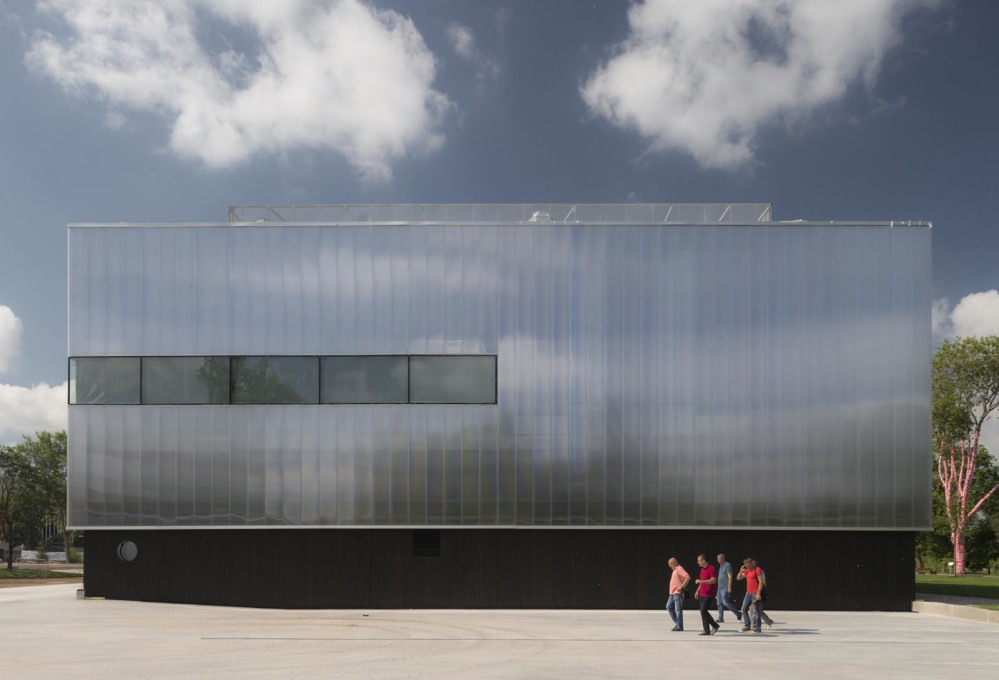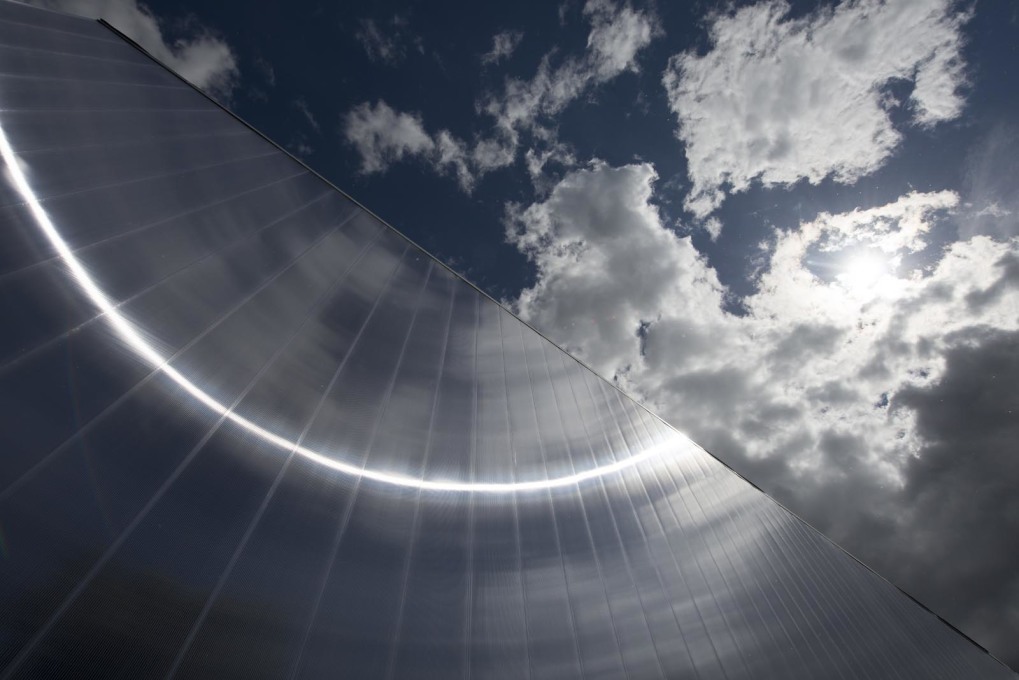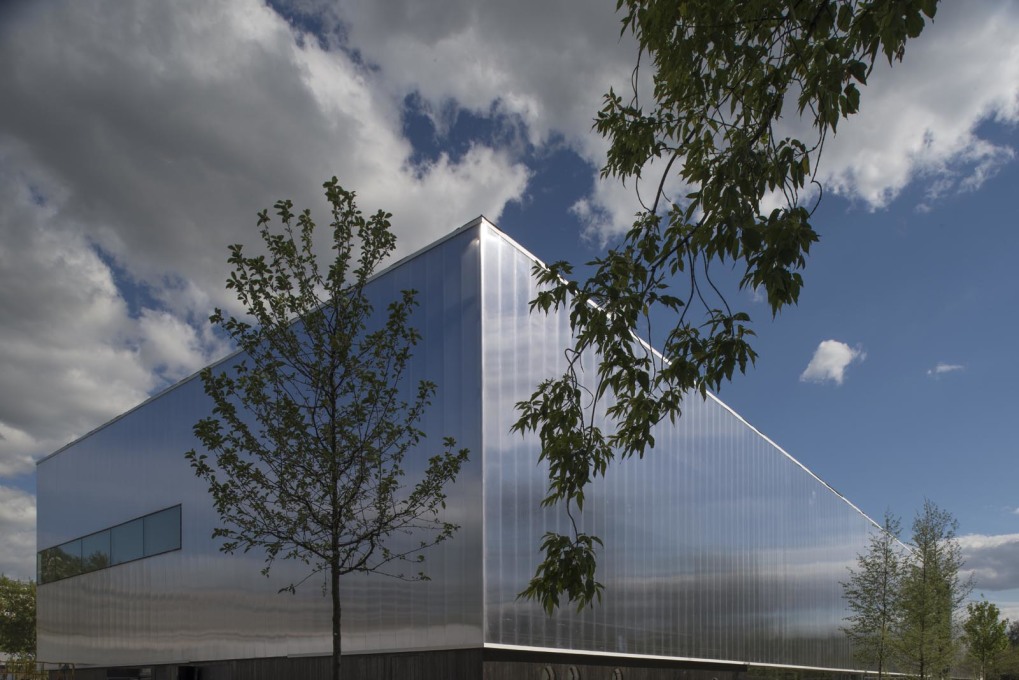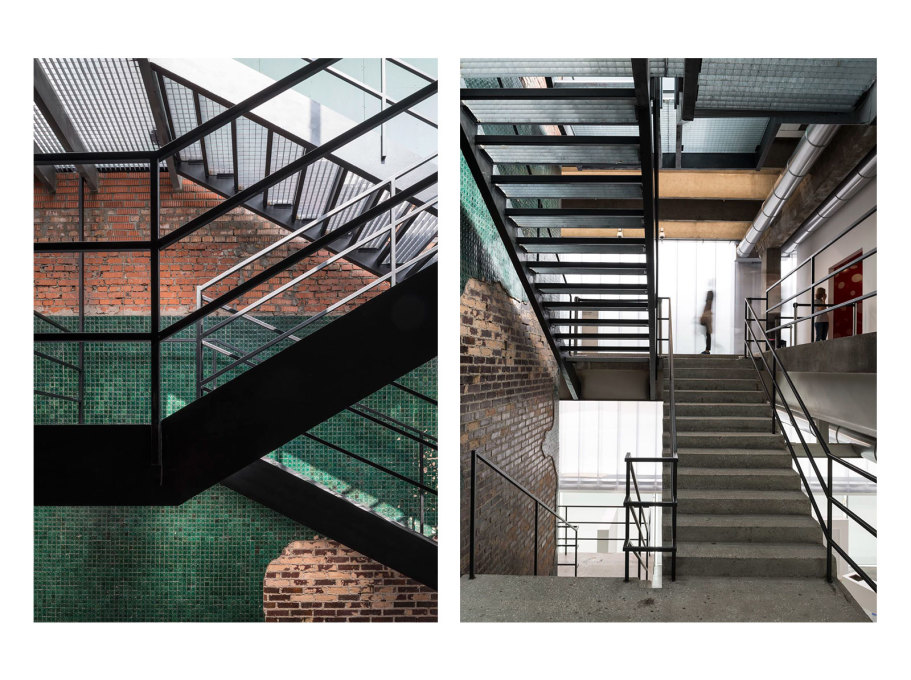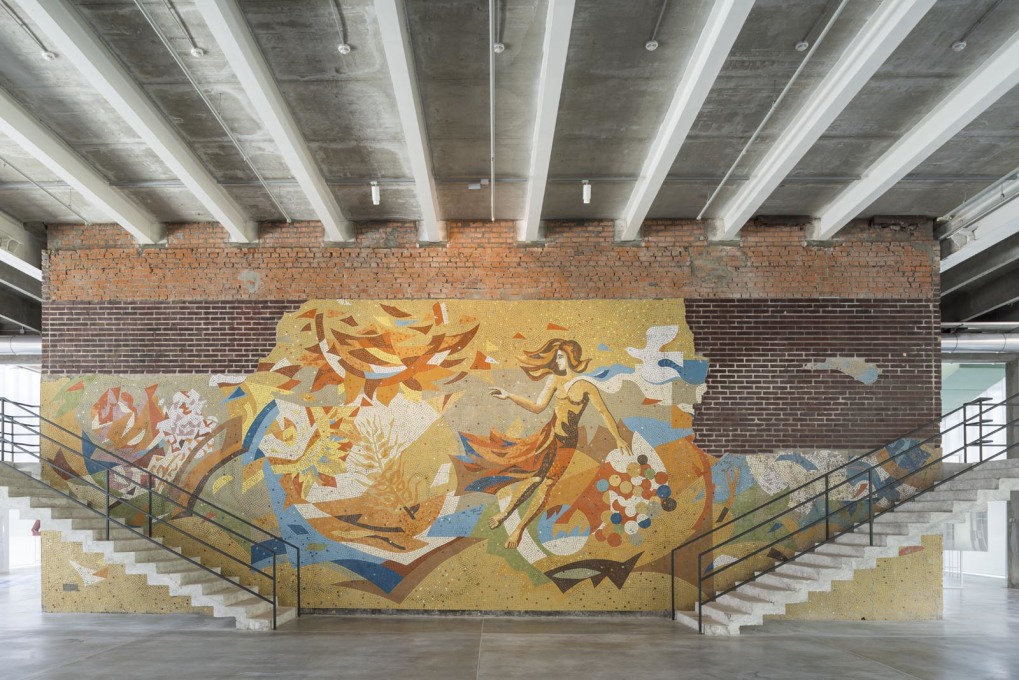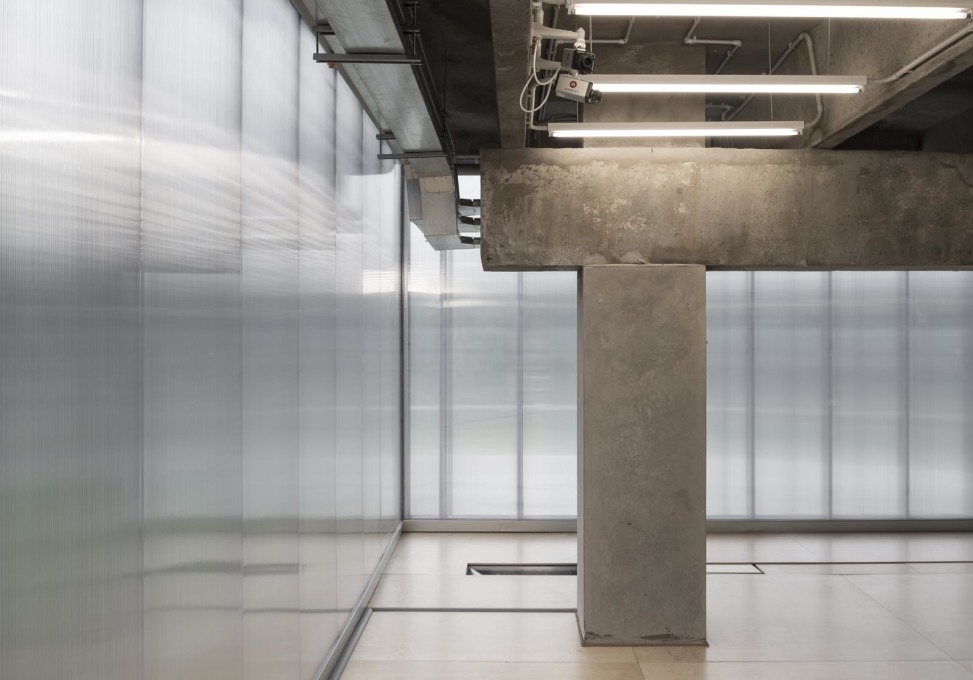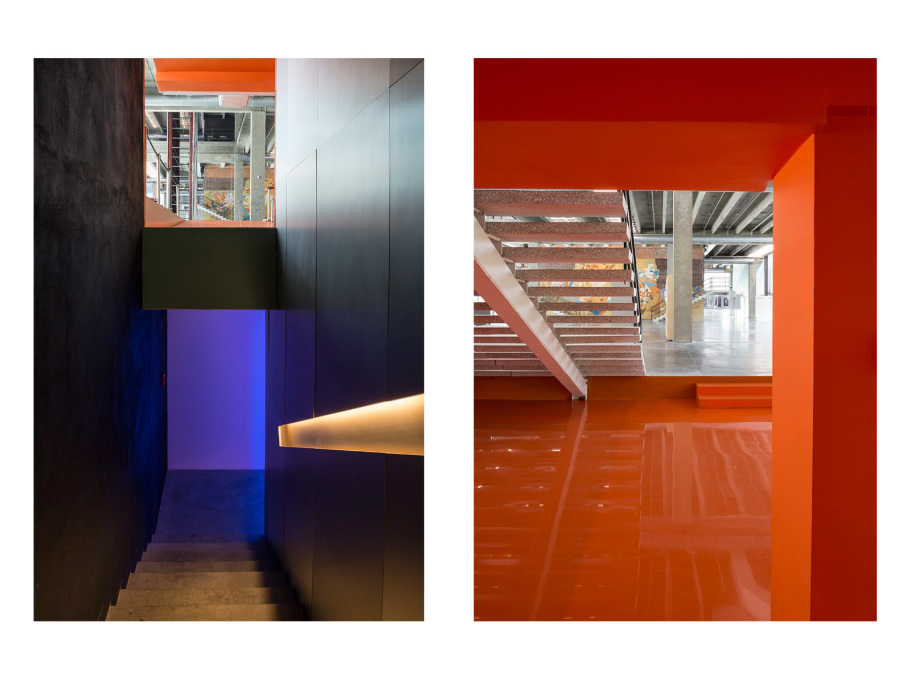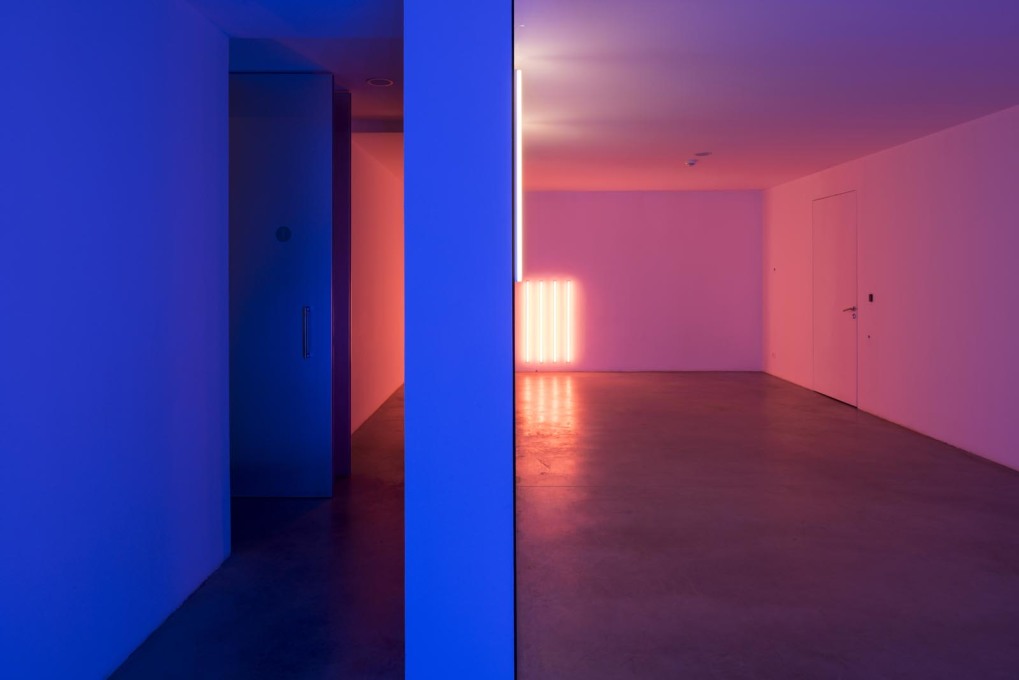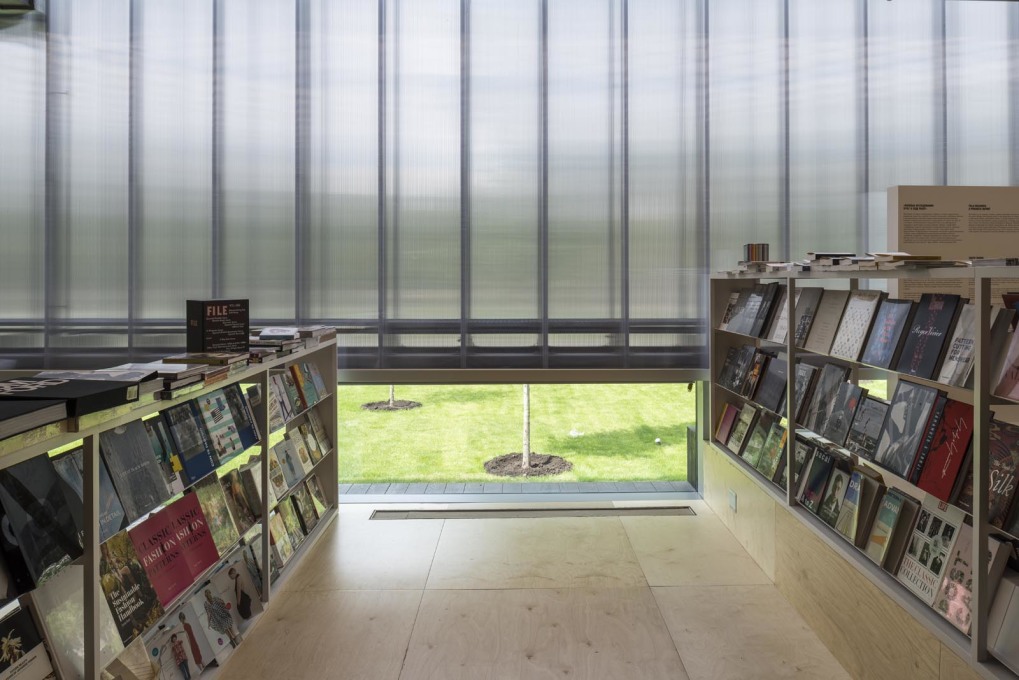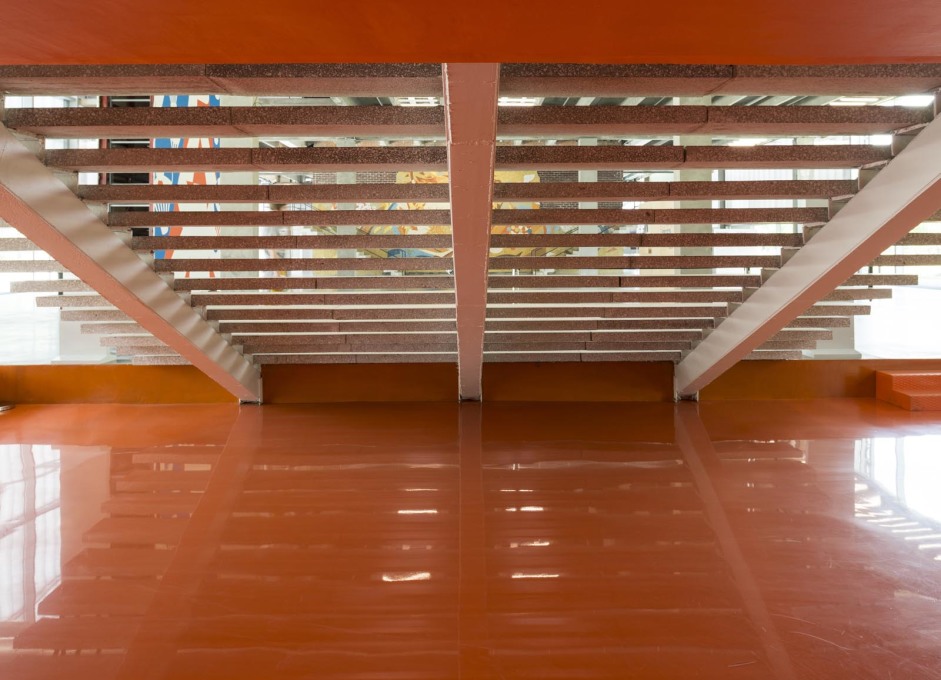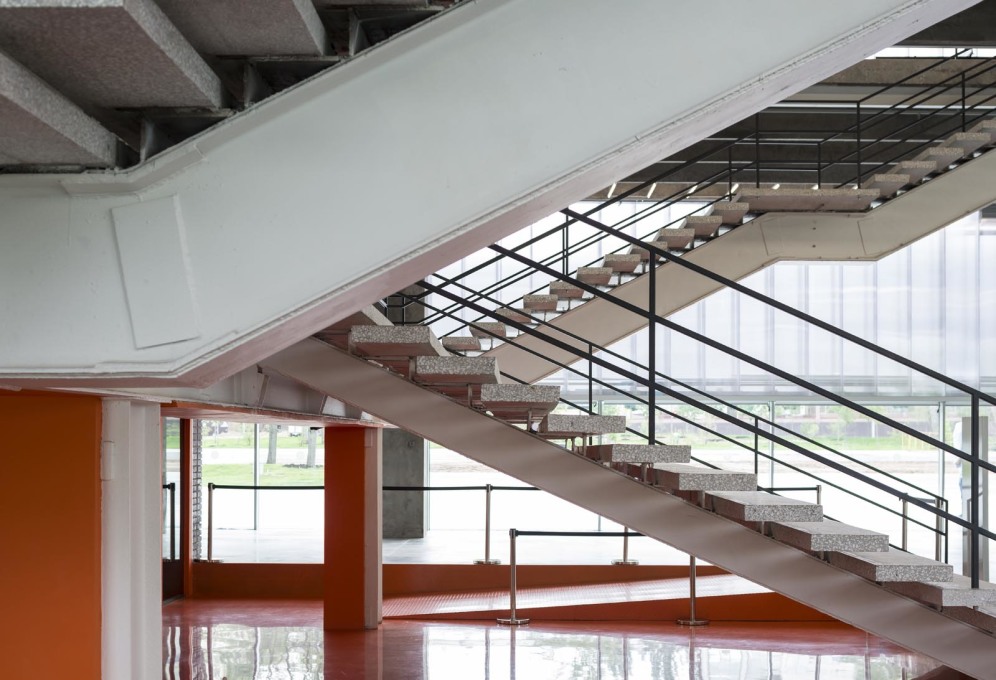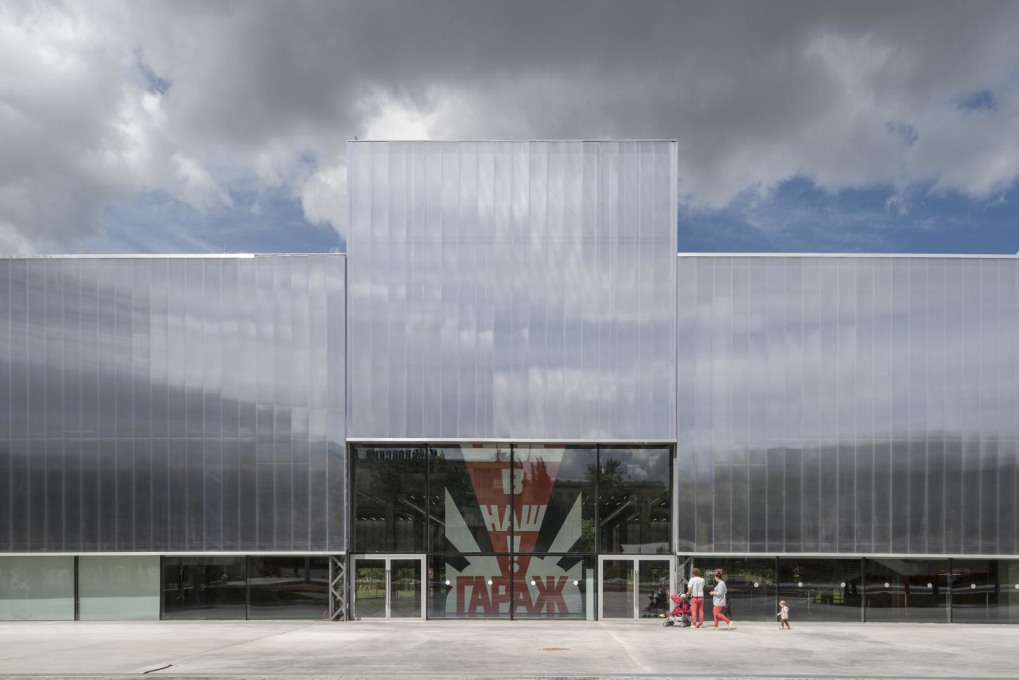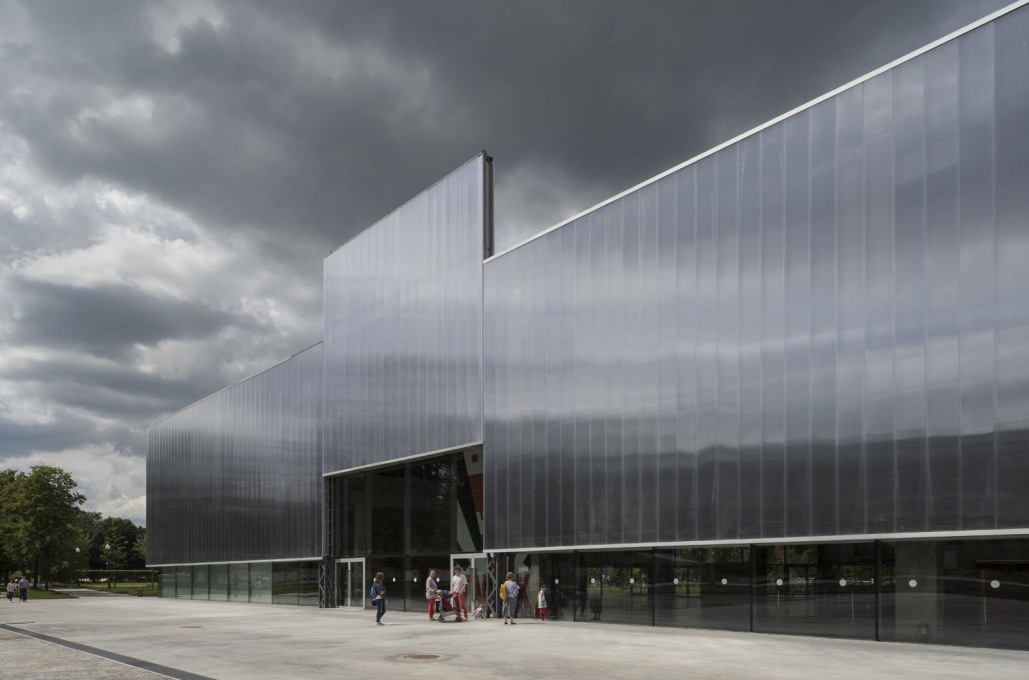The politics and aesthetics of preservation is a subject of increasing concern for architects the world over, raising questions on the nature of cultural heritage, memory and memorialisation. Despite his supposed ambivalence to architectural context, Rem Koolhaas has brought the renovation debate to Moscow, where OMA’s Garage Museum for Contemporary Art has been open since June 2015. Luise Rellensman visited the converted restaurant to find a space suited to its current function while imbued with just the right dosage of ruin.
Dealing with an existing building’s fabric in responsible ways beyond the dogmatic standards of preservation is becoming more and more natural for architects. Even Rem Koolhaas, who once called on his colleagues to “fuck context”, has taken an interest in preservation, recently completing the Garage Museum of Contemporary Art in Moscow, converted from a relatively anonymous Soviet restaurant.
The 1960s Vremena Goda restaurant – once a popular day-trip location – was not a well known part of Moscow’s architectural history until last summer. “This building was never listed as interesting, it just stood there empty and abandoned in Gorky Park for about 20 years,” says Yuri Palmin, architectural photographer and researcher in Soviet modernism. “The building had no notable history or famous architect associated with it. What Koolhaas was interested in was the post-war Soviet modernism with its huge, open floor plans.”
Indeed, as Koolhaas himself acknowledged at a recent lecture in Berlin: “Architects are prisoners of the Zeitgeist and the market economy. If you started this project from scratch you could never make a building of the same generosity.” Consequently, in Gorky Park OMA exploited the original qualities of the existing structure for its new use as a gallery: the open floor plans in the south-western part of the building serve as large open spaces for exhibitions, projects and events, while the more fragmented spaces in the north-eastern part accommodate research and education facilities. In total the Garage Museum encompasses 5,400 square metres of gallery space on two levels, a creative centre for children, a shop, a café, an auditorium, offices and a roof terrace.
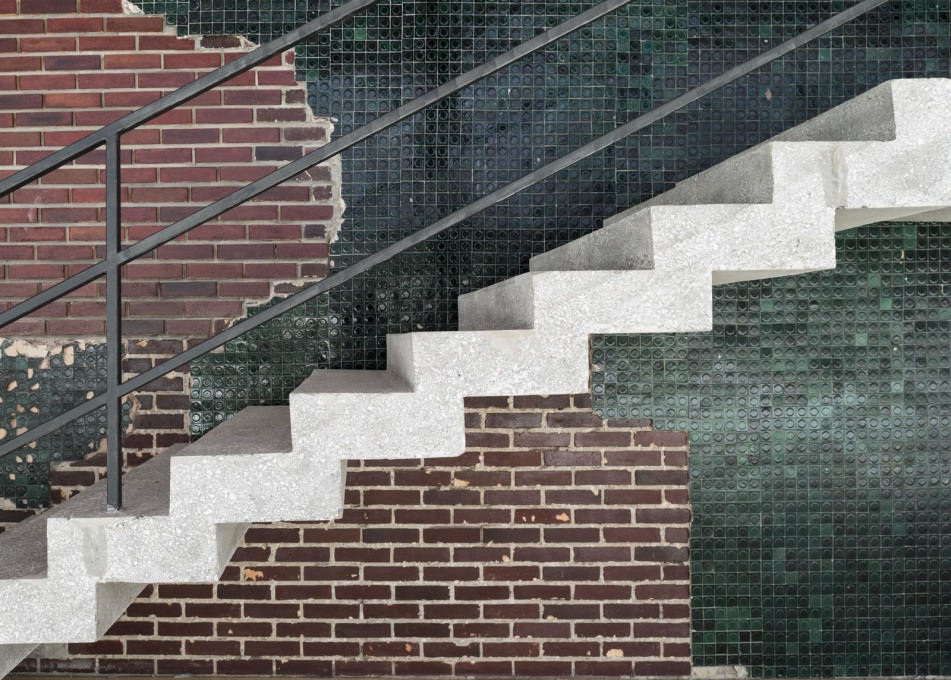
Yet it was not only the spatial qualities of this former ruin that fascinated the architect. OMA’s overall design maintains a degree of decay and history by preserving some original elements, including a mosaic wall, tiles, and brick. A rather anonymous socialist mural was given the kind of careful treatment that an ancient mosaic typically receives, using archaeological restoration methods.
With his complementing architecture, Koolhaas also addresses the skeleton of the existing structure – made with prefabricated concrete components – by leaving bare concrete exposed, with a patina derived from years of neglect once the structure had lost its façade and was laid open to the effects of wind and weather.
As well as preserving original elements the OMA development makes the most of the building’s relatively unkown status to add new features. “This restaurant was not a monument, which gave Koolhaas freedom to use his creativity without being tied to the regulations of preservation,” argues Palmin. This freedom has allowed for the installation of a translucent, double layer polycarbonate façade that sits 2.25 metres above ground level, visually reconnecting the pavilion’s interior with the park.
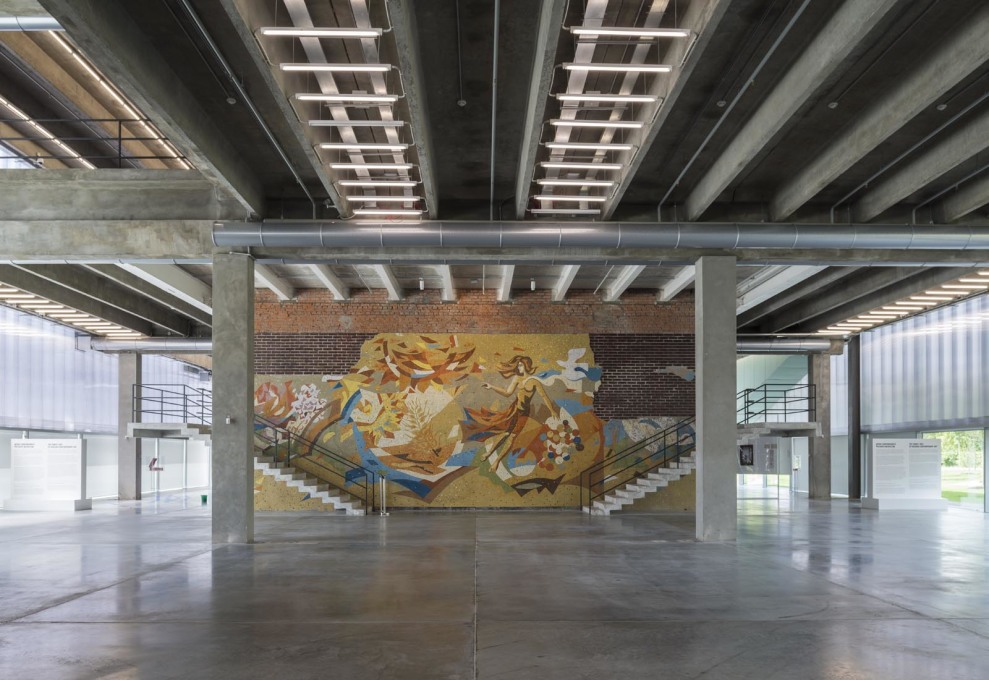
According to Palmin’s interpretation the material also implies a certain cheapness and temporariness. “In Russia, polycarbonate was mostly used for very cheap and mostly temporary construction, it’s one of those frequent motifs of vernacular architecture here. As such it was used by Alexander Brodsky, an architect extremely sensitive to ‘meaningful’ construction materials.”
This blend of renovated and retrofitted architecture means the former restaurant does not offer a homogenous, clean environment for artworks but instead a variety of backdrops – from ruinous charm to white cube. Palmin finds this is a fitting context for the rather unconventional and emerging contemporary works that are hosted by the Garage Museum, whose name derives from its very first home in an avant-garde bus depot, designed by the revered constructivist architect Konstantin Melnikov in the 1920s.
“We as architects can help to decide what to keep and transform and what not to”, stated Koolhaas in his Berlin lecture in January 2016. But in the end it is still a form of preservation – a preservation without preservationists. His project proves that a confident approach to an existing structure is often more interesting than the restoration of a architectural monument to its allegedly original state. In the Garage Museum Koolhaas demonstrates that preservation can be a form of art.




